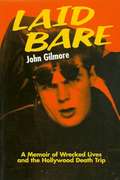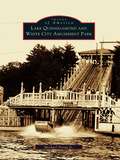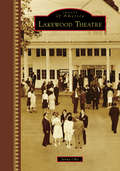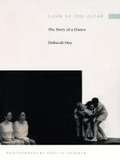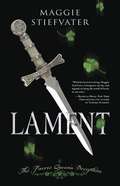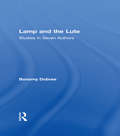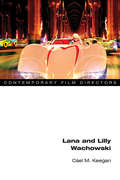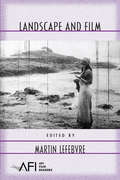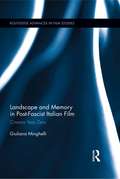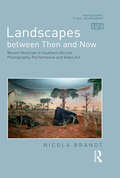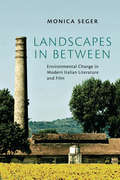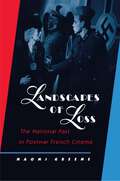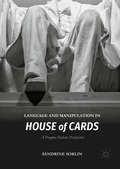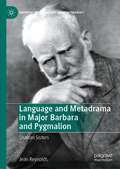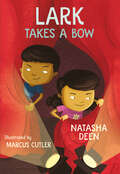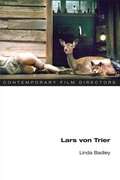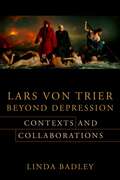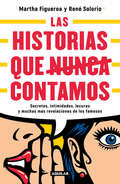- Table View
- List View
Laid Back in Washington
by Art Buchwald"Who is that man in the white hat on the palomino horse riding down Pennsylvania Avenue?" the lady asked. "That's Art Buchwald, who's come to town to help rid President Reagan of fraud, waste and corruption in the government." "What's that on his hip?" "That's a Smith-Remington typewriter. Buchwald has the reputation for being the fastest hunt-and-peck man in the East. I've seen him hit three congressmen with one paragraph, at 100 yards." "He sure looks laid back in the saddle." "Don't let that trick you. He's picked up the California style ever since the Reagans moved into the White House. Nobody messes with him when he's looking for a column. He's taken on six Presidents, eight Vice Presidents, the FBI, the CIA, and the entire Department of Energy in his time." "He looks awfully fat for a gunslinger." "That's what fools most people. Under that soft underbelly is a thin hostile man screaming to get out." "Where's he going now?" "Heaven only knows, but I would hate to be anywhere near him when he pulls out his Smith-Remington and starts shooting up the town." "How can he tell the bad guys from the good guys?" "He works under the assumption that there( are no bad guys in Washington-only good guys doing bad things." "I guess we can all sleep better knowing he's here." "You can say that again. He's the only one who can save us from ourselves." "Oh my God, he just fell off his horse." "That's just a trick of his so no one in Washington will take him seriously." Following in the profoundly unserious spirit of Down the Seine and Up the Potomac and The Buchzvald Stops Here, Laid Back in Washington leaves no turn unstoned, but no feelings hurt for long. In this dazzling yet dizzy portrait of the new Washington, Art Buchwald not only reveals himself as the master chronicler of our leaders' foibles, but as a sophisticated wit in the elegant tradition of Oscar Wilde and Snoopy.
Laid Bare: A Memoir of Wrecked Lives and the Hollywood Death Trip
by John GilmoreA powerful chronicler of the American Nightmare through his gripping examinations of near-mythic Southern California murders (the Black Dahlia, Tate-La Bianca), John Gilmore now draws upon his personal experiences to turn his sights on our morbid obsession with Celebrity and the ruinous price it extracts from those who would pursue it. With caustic clarity and 20/20 hindsight, Gilmore unstintingly recounts his relationships with the likes of Janis Joplin, Jack Nicholson, Dennis Hopper, Jane Fonda, Jean Seberg and Lenny Bruce on the way up and at the peaks of their notoriety. In baring his role in James Dean's attempts to push the bounds of sexual experimentation, Gilmore explores the actor's legendary fascination with speed and death. With hip, vivid prose, Gilmore describes his illuminating and often haunting first-hand encounters with Hank Williams, Ed Wood, Jr., Briggite Bardot, Sal Mineo, Eartha Kitt, Charles Manson, Jayne Mansfield, Vampira, Steve McQueen and many other denizens of the 20th century's dubious Pantheon.
Laid Bare: My story of love, fame and survival
by Gail PorterGail Porter burst on to our TV screens in the late 90s presenting The Movie Chart Show, Alive and Kicking and Top of the Pops. Bright, sparky and beautiful she soon attracted an entirely different audience, posing for a number of men's magazines and rapidly becoming the pin-up of the lad-mag generation. FHM, in a now famous stunt, even projected her naked form on to the Houses of Parliament. But beneath her cheery public façade, Gail was struggling with anorexia and bi-polar disorder. After nine years of extreme dieting, she collapsed and through sheer determination forced herself to begin eating properly again. Having been told she would never be able to conceive, her new healthier lifestyle led to a much desired pregnancy by her then husband, Toploader guitarist Dan Hipgrave. But the intense pressures of juggling motherhood with her career, led to crippling post-natal depression and precipitated the breakdown of her marriage. Overwhelmed by single motherhood, one day after dropping her daughter Honey off at nursery, she took an overdose and her world very publicly began to unravel.But Gail's ability to stay afloat as her life crumbled in the public spotlight made her an icon all over again for a new audience of ordinary women who recognised her pain. She refused to hide-away as stress-induced alopecia caused her to loose her hair, famously appearing at a charity event sporting a startling pink Mohican. Her stunning features and her unwillingness to wear a wig to hide her bald head have made her a contemporary icon.But despite all her troubles, Gail remains upbeat and positive. She has become a role model for coming through it all as a good mother and a working woman unbowed. As iconic as Jordan, smart as Billie and as wild as Kerry, Gail Porter has written her autobiography herself - a raw, honest account of her own troubled life and the world of celebrity we now live in.
Lake Quinsigamond and White City Amusement Park (Images of America)
by Michael Perna Jr.In the 1800s and well into the 1900s, the area around Lake Quinsigamond, in Shrewsbury and Worcester, was one huge summer resort. Hotels, ethnic and social clubs, boat clubs, a horse racing track, picnic grounds, and two amusement parks, Lincoln Park and White City Park, lined the shore. Steamboats and smaller steam launches transported tourists to the area. Canoes, rowboats, sailboats, and motorboats crowded the lake on weekends. Crew boat regattas, which started in the 1850s, continue to this day. Lake Quinsigamond and White City Amusement Park lets readers experience the attractions, such as the shoot the chutes and White City roller coaster, and enjoy the fun atmosphere during those long-ago summers.
Lakewood Park (Images of America)
by The Guinan FamilySituated in the coal regions of northeast Pennsylvania, Lakewood Park was established in 1916 by the Guinan family as a place to bathe, picnic, and camp. It became known as a nature retreat for the nearby miners and their families, and it developed into the destination for swimming, amusement rides, skating, big band dances, boxing matches, ethnic celebrations, summer stock plays, and political banquets. The park boasted a 150-yard cement pool, hand-carved Spillman carousel, and grand ballroom. It was the host of the longest-running ethnic festival in Pennsylvania, Lithuanian Day, from 1914 to 1984. Using vintage images, Lakewood Park recalls the various festivals and celebrations, amusements rides, and celebrity performers, such as Dick Clark and Doris Day, that made the park an entertainment mecca for 68 years.
Lakewood Theatre (Images of America)
by Jenny ObyBeginning as a humble vaudeville hall in the Skowhegan-Madison trolley park, Lakewood Theatre has graced the southwestern shore of Lake Wesserunsett in Madison, Maine, since the turn of the 20th century. Under the masterful guidance of Herbert L. Swett, a Bangor native and Bowdoin graduate, Lakewood eventually developed into a nationally renowned playhouse that was called the “Broadway in Maine” by the New York Times in its heyday, from 1925 until World War II. In the years following the war, Lakewood was operated by Swett’s heirs and became a virtual who’s who of both Broadway and Hollywood, until it nearly went dark in the early 1980s. Operating today as a nonprofit community theater, Lakewood is the official state theater of Maine and the oldest continually running summer theater in the country.
Lamb at the Altar: The Story of a Dance
by Deborah Hay"The intention of my work is to dislodge assumptions about the fixity of the three-dimensional body."--Deborah HayHer movements are uncharacteristic, her words subversive, her dances unlike anything done before--and this is the story of how it all works. A founding member of the famed Judson Dance Theater and a past performer in the Merce Cunningham Dance Company, Deborah Hay is well known for choreographing works using large groups of trained and untrained dancers whose surprising combinations test the limits of the art. Lamb at the Altar is Hay's account of a four-month seminar on movement and performance held in Austin, Texas, in 1991. There, forty-four trained and untrained dancers became the human laboratory for Hay's creation of the dance Lamb, lamb, lamb . . . , a work that she later distilled into an evening-length solo piece, Lamb at the Altar. In her book, in part a reflection on her life as a dancer and choreographer, Hay tells how this dance came to be. She includes a movement libretto (a prose dance score) and numerous photographs by Phyllis Liedeker documenting the dance's four-month emergence.In an original style that has marked her teaching and writing, Hay describes her thoughts as the dance progresses, commenting on the process and on the work itself, and ultimately creating a remarkable document on the movements--precise and mysterious, mental and physical--that go into the making of a dance. Having replaced traditional movement technique with a form she calls a performance meditation practice, Hay describes how dance is enlivened, as is each living moment, by the perception of dying and then involves a freeing of this perception from emotional, psychological, clinical, and cultural attitudes into movement. Lamb at the Altar tells the story of this process as specifically practiced in the creation of a single piece.
Lame of Thrones: The Final Book in a Song of Hot and Cold
by The Harvard LampoonFrom Harvard's legendary humor publication comes an outrageous, uproariously funny parody of Game of Thrones, in the tradition of their previous bestselling parody book classics Bored of the Rings, Nightlight, and The Hunger Pains.An affectionate but take-no-prisoners send-up of the massive literary and television franchise, Lame of Thrones offers fans a way of reentering the fictional world they have come to love and merrily explodes all of its conventions -- as well as their expectations of the characters -- to hilarious ends. It may even leave you more satisfied than the actual TV ending of Game of Thrones. In fact, if it doesn't the Lampoon has really dropped the ball. Lame of Thrones will take you to Westopolis, where several extremely attractive egomaniacs are vying to be ruler of the realm and sit on the Pointy Chair. Our hero Jon Dough was a likely bet, but his untimely murder at the hands of his own men of the Night's Crotch has made that seem less likely. Will Dragon Queen Dennys Grandslam escape from her Clothkhaki captors and return to conquer the world? Or will she just get left in the desert counting grains of sand for the rest of the book? And what about Jon Dough's siblings? Will they be mentioned? Probably? Almost definitely, yes? It would be weird if they weren't prominent characters in the book, you say?To find out, read the book you wish George R.R. Martin would write but never will. The Lampoon -- the place where such comedy writers and performers as Conan O'Brien, Colin Jost, B.J. Novak, Patricia Marx, Alan Yang, Andy Borowitz and many more all got their start -- is ready to serve parody notice to the most entertaining, infuriating, and inescapable cultural phenomenon of the past decade.
Lament: The Faerie Queen’s Deception (Books of Faerie #1)
by Maggie StiefvaterA dark faerie fantasy that features authentic Celtic faerie lore, "Lament" follows 16-year-old Dierdre Monaghan, who discovers that she is a cloverhand -- one who can see faeries. Dierdre soon finds herself trapped in the middle of a centuries-old faerie war.
Lamp and the Lute: Studies in Seven Authors
by Bonamy DobreeFirst Published in 1964. Routledge is an imprint of Taylor & Francis, an informa company.
Lana and Lilly Wachowski (Contemporary Film Directors)
by Cael M. KeeganLana and Lilly Wachowski have redefined the technically and topically possible while joyfully defying audience expectations. Visionary films like The Matrix trilogy and Cloud Atlas have made them the world's most influential transgender media producers, and their coming out retroactively put trans* aesthetics at the very center of popular American culture. Cáel M. Keegan views the Wachowskis films as an approach to trans* experience that maps a transgender journey and the promise we might learn "to sense beyond the limits of the given world." Keegan reveals how the filmmakers take up the relationship between identity and coding (be it computers or genes), inheritance and belonging, and how transgender becoming connects to a utopian vision of a post-racial order. Along the way, he theorizes a trans* aesthetic that explores the plasticity of cinema to create new social worlds, new temporalities, and new sensory inputs and outputs. Film comes to disrupt, rearrange, and evolve the cinematic exchange with the senses in the same manner that trans* disrupts, rearranges, and evolves discrete genders and sexes.
Landscape and Film (AFI Film Readers)
by Martin LefebvreFirst published in 2006. Routledge is an imprint of Taylor & Francis, an informa company.
Landscape and Memory in Post-Fascist Italian Film: Cinema Year Zero (Routledge Advances in Film Studies)
by Giuliana MinghelliThis study argues that neorealism’s visual genius is inseparable from its almost invisible relation to the Fascist past: a connection inscribed in cinematic landscapes. While largely a silent narrative, neorealism’s complex visual processing of two decades of Fascism remains the greatest cultural production in the service of memorialization and comprehension for a nation that had neither a Nuremberg nor a formal process of reconciliation. Through her readings of canonical neorealist films, Minghelli unearths the memorial strata of the neorealist image and investigates the complex historical charge that invests this cinema. This book is both a formal analysis of the new conception of the cinematic image born from a crisis of memory, and a reflection on the relation between cinema and memory. Films discussed include Ossessione (1943) Paisà (1946), Ladri di biciclette (1948), and Cronaca di un amore (1950).
Landscapes between Then and Now: Recent Histories in Southern African Photography, Performance and Video Art (Photography, Place, Environment)
by Nicola BrandtIn Landscapes Between Then and Now, Nicola Brandt examines the increasingly compelling and diverse cross-disciplinary work of photographers and artists made during the transition from apartheid to post-apartheid and into the contemporary era. By examining specific artworks made in South Africa, Namibia and Angola, Brandt sheds light on established and emerging themes related to aftermath landscapes, embodied histories, (un)belonging, spirituality and memorialization. She shows how landscape and identity are mutually constituted, and profiles this process against the background of the legacy of the acutely racially divisive policies of the apartheid regime that are still reflected on the land. As a signpost throughout the book, Brandt draws on the work of the renowned South African photographer Santu Mofokeng and his critical thinking about landscape. Landscapes Between Then and Now explores how practitioners who engage with identity and their physical environment as a social product might reveal something about the complex and fractured nature of postcolonial and contemporary societies. Through diverse strategies and aesthetics, they comment on inherent structures and epistemologies of power whilst also expressing new and radical forms of self-determinism. Brandt asks why these cross-disciplinary works ranging from social documentary to experimental performance and embodied practices are critical now, and what important possibilities for social and political reflection and engagement they suggest.
Landscapes in Between
by Monica SegerSince its economic boom in the late 1950s, Italy has grappled with the environmental legacy of rapid industrial growth and haphazard urban planning. One notable effect is a preponderance of interstitial landscapes such as abandoned fields, polluted riverbanks, and makeshift urban gardens. Landscapes in Between analyses authors and filmmakers - Italo Calvino, Pier Paolo Pasolini, Gianni Celati, Simona Vinci, and the duo Daniele Ciprì and Franco Maresco - who turn to these spaces as productive models for coming to terms with the modified natural environment.Considering the ways in which sixty years' worth of Italian literary and cinematic representations engage in the ongoing dialogue between nature and culture, Monica Seger contributes to the transnational expansion of environmental humanities. Her book also introduces an ecocritical framework to Italian studies in English. Rejecting a stark dichotomy between human construction and unspoilt nature, Landscapes in Between will be of interest to all those studying the fraught relationship between humanity and environment.
Landscapes of Loss: The National Past in Postwar French Cinema
by Naomi GreeneIn Landscapes of Loss, Naomi Greene makes new sense of the rich variety of postwar French films by exploring the obsession with the national past that has characterized French cinema since the late 1960s. Observing that the sense of grandeur and destiny that once shaped French identity has eroded under the weight of recent history, Greene examines the ways in which French cinema has represented traumatic and defining moments of the nation's past: the political battles of the 1930s, the Vichy era, decolonization, the collapse of ideologies. Drawing upon a broad spectrum of films and directors, she shows how postwar films have reflected contemporary concerns even as they have created images and myths that have helped determine the contours of French memory. This study of the intricate links between French history, memory, and cinema begins by examining the long shadow cast by the Vichy past: the repressed memories and smothered unease that characterize the cinema of Alain Resnais are seen as a kind of prelude to a fierce battle for national memory that marked so-called rétro films of the 1970s and 1980s. The shifting political and historical perspectives toward the nation's more distant past, which also emerged in these years, are explored in the light of the films of one of France's leading directors, Bertrand Tavernier. Finally, the mood of nostalgia and melancholy that appears to haunt contemporary France is analyzed in the context of films about the nation's imperial past as well as those that hark back to a "golden age," a remembered paradis perdu, of French cinema itself.
Language & Peace (War And Peace Ser. #Vol. 6)
by Christina Schäffne Anita L. WendenFirst published in 1999. Routledge is an imprint of Taylor & Francis, an informa company.
Language and Manipulation in House of Cards
by Sandrine SorlinThis book is to date the first monograph-length study of the popular American political TV series House of Cards. It proposes an encompassing analysis of the first three seasons from the unusual angles of discourse and dialogue. The study of the stylistic idiosyncrasies of the ruthless main protagonist, Frank Underwood, is completed by a pragmatic and cognitive approach exposing the main characters' manipulative strategies to win over the other. Taking into account the socio-cultural context and the specificities of the TV medium, the volume focuses on the workings of interaction as well as the impact of the direct address to the viewer. The book critically uses the latest theories in pragmatics and stylistics in its attempt at providing a pragma-rhetorical theory of manipulation.
Language and Metadrama in Major Barbara and Pygmalion: Shavian Sisters (Bernard Shaw and His Contemporaries)
by Jean ReynoldsThis book focuses on two important topics in Shaw’s Major Barbara and Pygmalion that have received little attention from critics: language and metadrama. If we look beyond the social, political, and economic issues that Shaw explored in these two plays, we discover that the stories of the two “Shavian sisters”— Barbara Undershaft and Eliza Doolittle—are deeply concerned with performance and what Jacques Derrida calls “the problem of language.” Nearly every character in Major Barbara produces, directs, or acts in at least one miniature play. In Pygmalion, Henry Higgins is Eliza’s acting coach and phonetics teacher, as well as the star of an impromptu, open-air phonetics show. The language content in these two plays is just as intriguing. Did Eliza Doolittle have to learn Standard English to become a complete human being? Should we worry about the bad grammar we hear at Barbara Undershaft’s Salvation Army shelter? Is English losing its precision and purity? Meanwhile, in the background, Shaw keeps reminding us that language and theatre are always present in our everyday lives—sometimes serving as stabilizing forces, and sometimes working to undo them.
Lara's Leap of Faith (The Royal Ballet School Diaries, Book #2)
by Alexandra MossEllie's first term at the Royal Ballet School is filled with excitement, hard work, homesickness, an unexpected chance to perform, and new friendships, tainted only by the rude and hateful behavior of Lara, the girl she crashed into during their audition.
Larger Than Life: A History of Boy Bands from NKOTB to BTS
by Maria Shermanp.p1 {margin: 0.0px 0.0px 0.0px 0.0px; font: 14.0px Calibri} p.p2 {margin: 0.0px 0.0px 0.0px 0.0px; font: 14.0px Calibri; min-height: 17.0px} This nostalgic, fully-illustrated history of boy bands -- written by culture critic and boy band stan Maria Sherman -- is a must-have for diehard fans of the genre and beyond.The music, the fans, the choreography, the clothes, the merch, the hair. Long after Beatlemania came and went, a new unstoppable boy band era emerged. Fueled by good looks and even greater hooks, the pop phenomenon that dominated the '80s, '90s, and 2000s has left a long-lasting mark on culture, and it's time we celebrate it. Written by super fan Maria Sherman for stans and curious parties alike, Larger Than Life is the definitive guide to boy bands, delivered with a mix of serious obsession and tongue-in-cheek humor.Larger Than Life begins with a brief history of male vocal groups, spotlighting The Beatles, the Jackson 5, and Menudo before diving into the building blocks of these beloved acts in "Boy Bands 101." She also focuses on artists like New Edition, New Kids on the Block, Backstreet Boys, *NSYNC, One Direction, and BTS before ending with an interrogation into the future of boy bands. Included throughout are Tiger Beat-inspired illustrations, capsule histories of the swoon-iest groups, in-depth investigations into one-hit wonders, and sidebars dedicated to conspiracy theories, dating, in-fighting, haters, fan fiction, fashion (Justin and Britney in denim, of course), and so much more.Informative, affectionate, funny, and never, ever fan-shaming, Larger Than Life is the first and only text of its kind: the ultimate celebration of boy bands and proof that this once maligned music can never go unappreciated.
Lark Takes a Bow (Orca Echoes #3)
by Natasha DeenMysteries seem to follow Lark and Connor Ba wherever they go, and today is no exception! The part-time detectives head to their local community theater to rehearse the play they are in, only to discover that someone is playing pranks on the theater company. The twin sleuths need to work quickly to catch the culprit before one more prank closes down the play for good. It's showtime, Lark and Connor! Lark Takes a Bow is the third title in the Lark Ba Detective series. The epub edition of this title is fully accessible.
Lars von Trier (Contemporary Film Directors)
by Linda BadleyScandinavia's foremost living auteur and the catalyst of the Dogme95 movement, Lars von Trier is arguably world cinema's most confrontational and polarizing figure. Willfully devastating audiences, he takes risks few filmmakers would conceive, mounting projects that somehow transcend the grand follies they narrowly miss becoming. Challenging conventional limitations and imposing his own rules, he restlessly reinvents the film language. The Danish director has therefore cultivated an insistently transnational cinema, taking inspiration from sources that range from the European avant-garde to American genre films. This volume provides a stimulating overview of Trier's career while focusing on the more recent work, including his controversial Gold Heart Trilogy (Breaking the Waves, The Idiots, and Dancer in the Dark), the as-yet unfinished USA Trilogy (Dogville and Manderlay), and individual projects such as the comedy The Boss of It All and the incendiary horror psychodrama Antichrist. Closely analyzing the films and their contexts, Linda Badley draws on a range of cultural references and critical approaches, including genre, gender, and cultural studies, performance theory, and trauma culture. Two revealing interviews that Trier granted during crucial stages of Antichrist's development are also included.
Lars von Trier Beyond Depression: Contexts and Collaborations
by Professor Linda BadleyLars von Trier built a reputation as a provocateur from the start—but in the late 2000s, he entered an even more inflammatory phase. Amid Cannes controversies, Antichrist (2009), Melancholia (2011), Nymphomaniac (2013–14), and The House That Jack Built (2018) brandished the cinematic virtuosity von Trier once banned under the Dogme 95 Manifesto while subjecting audiences to “extreme” cinema. Following von Trier’s experience of clinical depression in 2006 and 2007, these films took an aggressively personal and retrospective turn against the backdrop of the director’s controversy-courting public appearances.Playing against widespread assumptions, Linda Badley takes a reparative approach, offering an in-depth examination of these four films and the contexts that produced them. Drawing on numerous interviews with the director and his collaborators as well as inside access to archival materials, she provides a thorough and comprehensive account of von Trier’s preproduction and creative process. Highlighting a transmedial turn, Badley tracks von Trier’s artistic touchstones from Wagner, Proust, and the Marquis de Sade to Scandinavian erotic cinema and serial killer genre tropes. She considers his portrayals of mental illness and therapy, gender and sexuality, nature and extinction, shedding light on the thematic concerns that unite these films as a distinct cycle. Offering nuanced readings of these films, the book emphasizes the significance of von Trier’s work for current critical and philosophical debates, showing how they engage with notions of the Anthropocene, “dark ecology,” and the postcinematic.
Las historias que nunca contamos: Secretos, intimidades, locuras y muchas más revelaciones de los famosos
by Martha FigueroaLas historias que nunca contamos reúne los secretos más jugosos de dos entregados y exitosos periodistas de espectáculos. El libro está lleno de revelaciones, ironía y reflexiones divertidas de un par de reporteros que "sabían demasiado". Una pelea con Adela Micha ante la mirada aterrada de un actor sin pelo; las escapadas nocturnas de Luis Miguel; una visita a la cárcel; un misterio candente de Alejandro Sanz; ¿qué esconden las piernas de Julio Iglesias?; el día que Thalía se vistió de luto ¡y terminó en una boda!; el miedo de Jenni Rivera o la verdadera tristeza de José José. ¿Creías que era todo? ¡No! En Las historias que nunca contamos se describe, además, la furia de un bondadoso Premio Nobel; lo fácil que fue burlar la seguridad de la mansión de Kate del Castillo; las locuras de Belinda y los viajes en la cajuela de Gloria Trevi. Con profundo conocimiento de la industria del entretenimiento, Martha Figueroa y René Solorio, comparten anécdotas y notas que nunca les dejaron publicar, porque no era el momento, porque los jefes lo prohibieron, por miedo, ¡porque serían un escándalo!, o porque eran tan extraordinarias que nadie las creía. ¡Y aquí es donde el lector corre a comprar el libro -pues conoce el trabajo del show business- y valora la seriedad de los autores!

